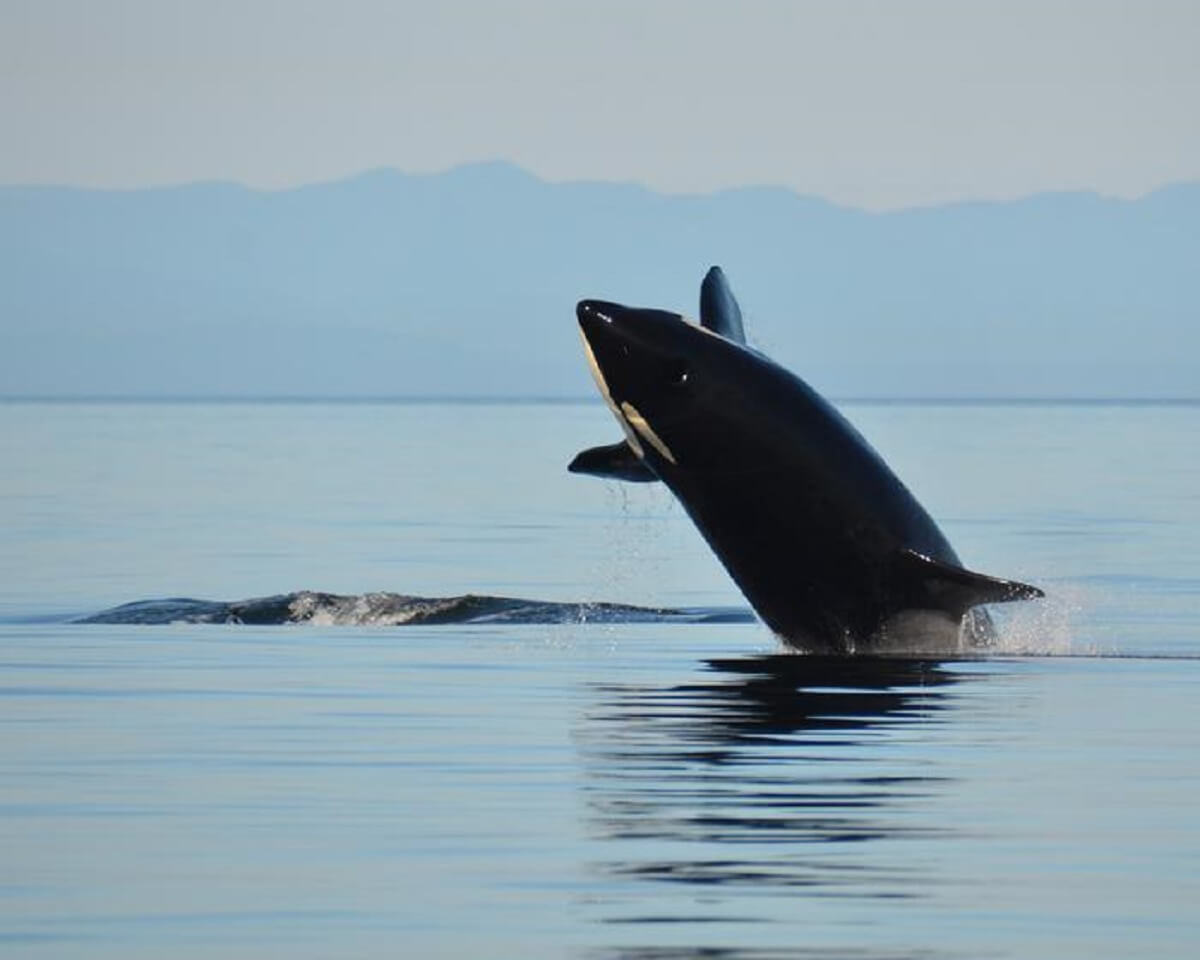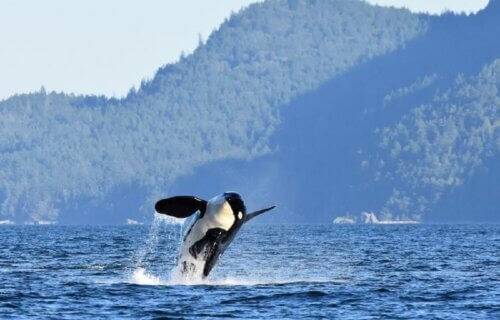SEATTLE — Endangered killer whales are altering their hunting behaviors, highlighting the importance of increased protection zones. Changes in their primary prey, salmon, have also significantly impacted the killer whales’ seasonal use of the inland Salish Sea.
The Southern Resident killer whales (Orcinus orca), which primarily consume fish, are recognized as an endangered species in both the United States and Canada. Both countries have identified the Salish Sea, the inland waters stretching across Washington State and British Columbia, as a critical habitat for these whales.
The Salish Sea extends from Olympia, Washington in the south to the Campbell River in British Columbia in the north, and west to Neah Bay. It encompasses the waters around the cities of Seattle and Vancouver.
A new study leverages daily occurrence data from 2018 to 2022 to analyze and compare to previously published whale presence figures and illustrate more recent habitat shifts. Historically, these whales have had a regular monthly presence in the Salish Sea, with their highest numbers observed from May through September. However, this has recently changed, at least in part due to shifting prey abundance.

Every Southern Resident occurrence was verified visually or acoustically, drawing on reports from an extensive network of community scientists and online streaming hydrophones.
“This study shows that historic Southern Resident habitat use of this area has essentially reversed: they used to be most abundant here from May through September, but now occur more in the fall and winter months while their spring and summer presence has declined dramatically,” says Dr. Monika Wieland Shields, the director of the Orca Behavior Institute in Washington State and lead author of the study, in a media release.
Whales are intelligent apex predators that can follow prey more than a mile deep into the sea, relying on sound even in complete darkness. Dr. Wieland Shields has observed orcas in the Salish Sea since 2000 and authored the 2019 book “Endangered Orcas: The Story of the Southern Residents.”
“Protecting habitats is a key component of endangered species recovery, but to be biologically meaningful, any geographic or temporal protection zones need to overlap in space and time with how the target species is currently using the habitat, rather than based on historic trends,” concludes Dr. Shields. “The analysis shows that the historic habitat use of this area by Southern Resident killer whales has essentially reversed. Both Canada and the US have implemented regional and seasonal protection measures aimed at supporting population recovery, but it is important that they are regularly updated to reflect shifting habitat usage by the Southern Residents. This study fills that data gap by demonstrating how these endangered orcas are utilizing the Salish Sea over the last 5 years and how that has shifted from previous trends.”
Earlier studies have documented how new behaviors spread among killer whales over time through cultural transmission. Orcas, which can grow up to 30 feet in length and weigh over six tons, are the only known predators of the iconic great white shark besides humans. Their diet consists of fish, squid, seals, and sea birds.
The research is published in the journal PeerJ Life & Environment.
You might also be interested in:
- ‘Serial’ killer whales return to slaughter great white sharks in never-before-seen video
- Whales, dolphins recognize when killer whales are near by their alarming calls
- Humpback whales teach each other songs from different regions and cultures
South West News Service writer Mark Waghorn contributed to this report.

